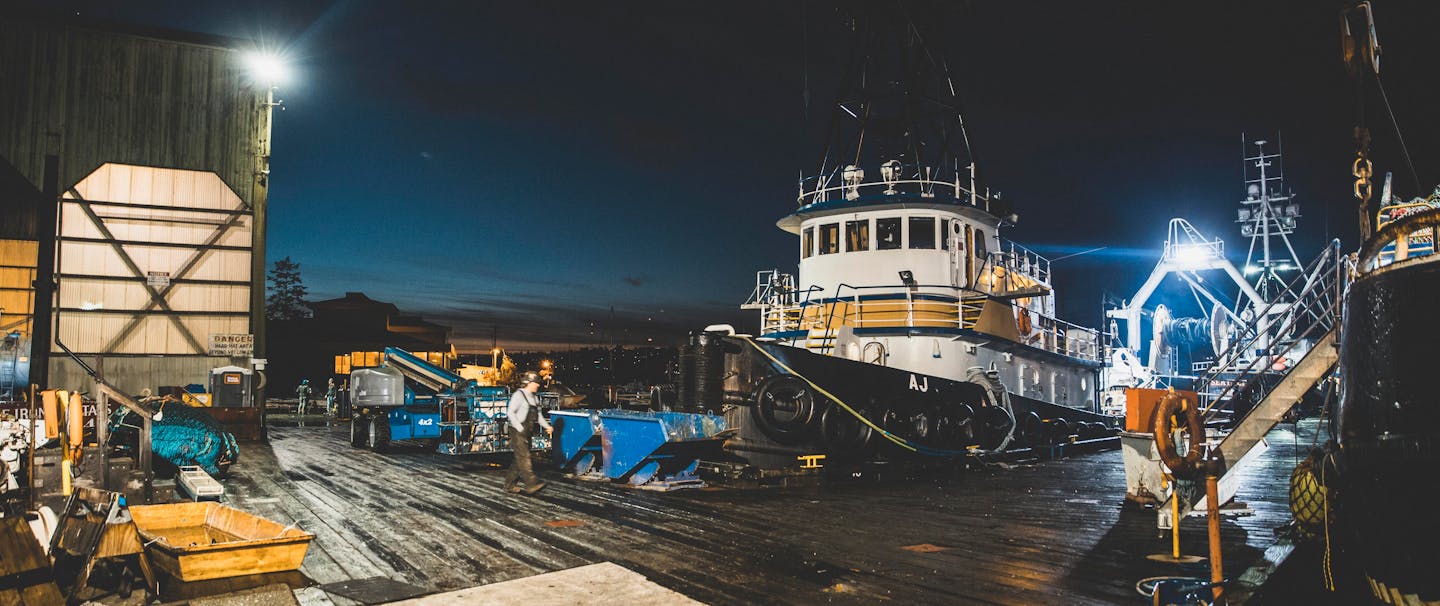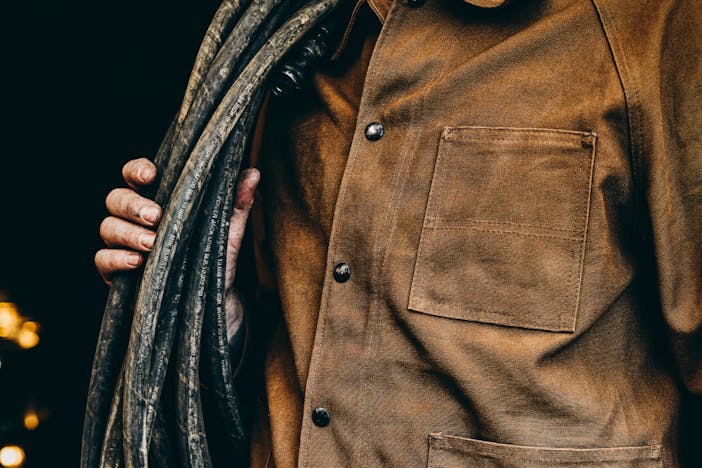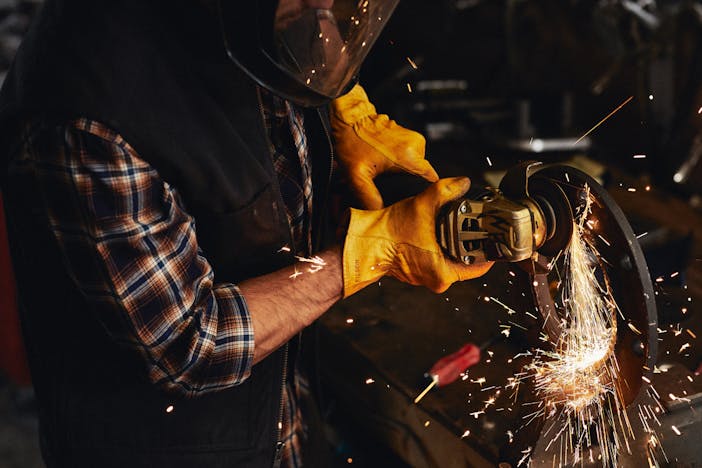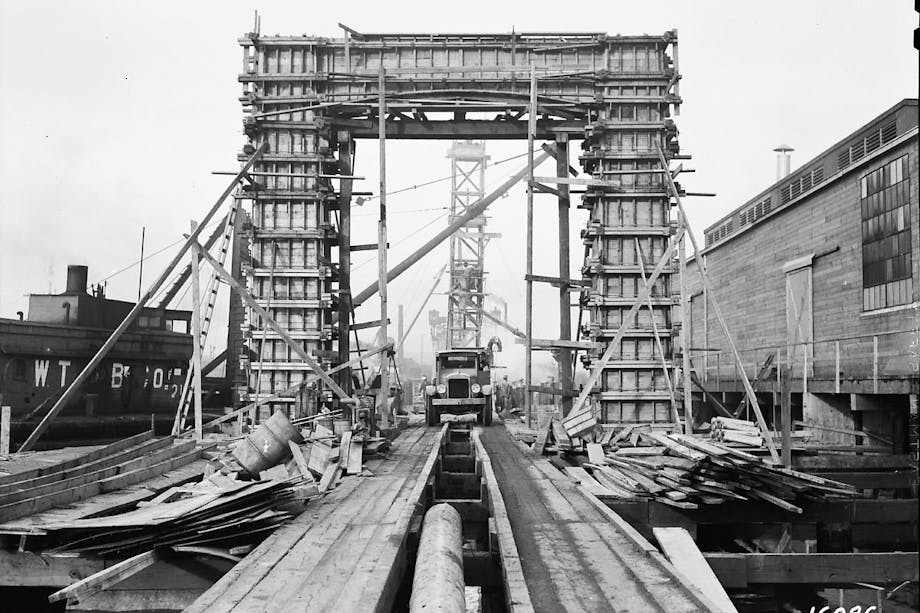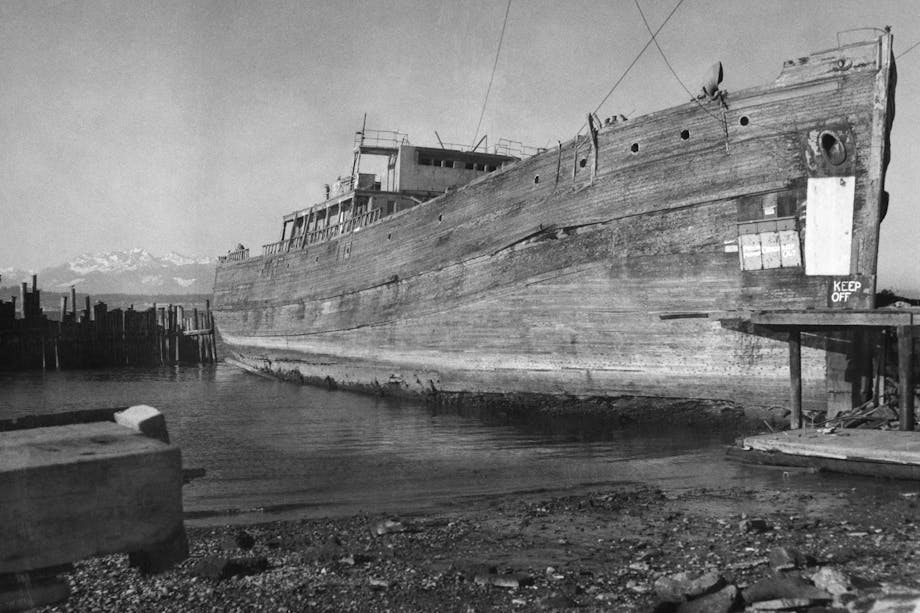Pacific Fishermen Inc., or “PacFish,” as it is known to the many boat builders, ship crews, employees, family members and stakeholders in the Ballard community, can be traced directly back to the year 1871. It was in this year that a 47-year-old Norwegian immigrant, ship carpenter, and operator named Thomas William Lake settled on the north side of the Salmon Bay waterfront in unincorporated Seattle and opened his own shipyard.
By some accounts, “Captain Lake” was the first shipbuilder to set up yard operations in the Seattle area. His arrival contributed to the flourishing new shipbuilding enterprise on Puget Sound, which helped to construct new fleets of wooden-hulled schooners used for fishing and transport of goods.
In the 1870s and 1880s, new shipyards proliferated throughout Puget Sound, the result of both the plentiful supply of fir timber as material for schooners, and the prevalence of sloops that required wooden hulls. During these decades, the fishing schooners built by local yards used to bring in catches of cod, salmon, herring, and halibut. The dozens of deep-water bays lining the coasts of Puget Sound in Washington Territory served as good yard locations. In terms of production, shipbuilding on Puget Sound had already passed the experimental stage prior to 1874, but in that year a specialty was made of sailing vessels as a new type of ship produced by local shipyards.
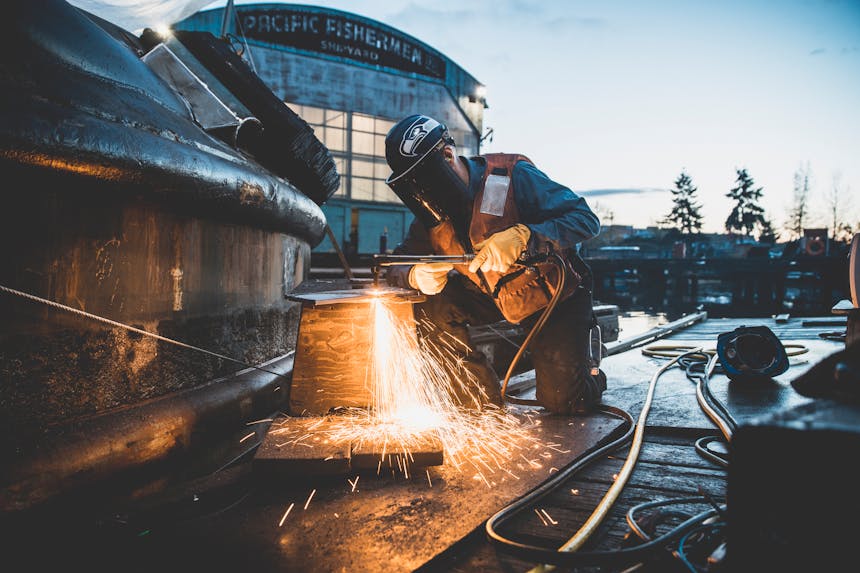
The location for Lake’s shipyard was a good one, situated at the foot of Ballard’s 4th Avenue on the waterfront of Salmon Bay (today at 24th Avenue NW). From its start, the shipyard was a modest operation, with a drydock for framing hulls and a carpentry woodshop to store the tools and raw materials that were fundamental to the work, all done by hand. The yard’s proximity to the Ballard community of Scandinavian fishermen proved to be equally valuable, as it became a place where locals could find reliable service for their fishing boats between seasons.
Lake constructed new schooners, tugboats, pleasure craft, and barges for the coal industry. His shipyard earned distinction with the launching of the three-mast vessel Katie Flickenger on July 21, 1876. The vessel was the first such barkentine from Seattle, with Captain S.J. Oilman supervising construction of the 150-foot hull. When completed, the Katie Flickenger had cost $830,000 and weighed in at 448 tons, making her the largest sailing vessel ever to be built in Seattle.
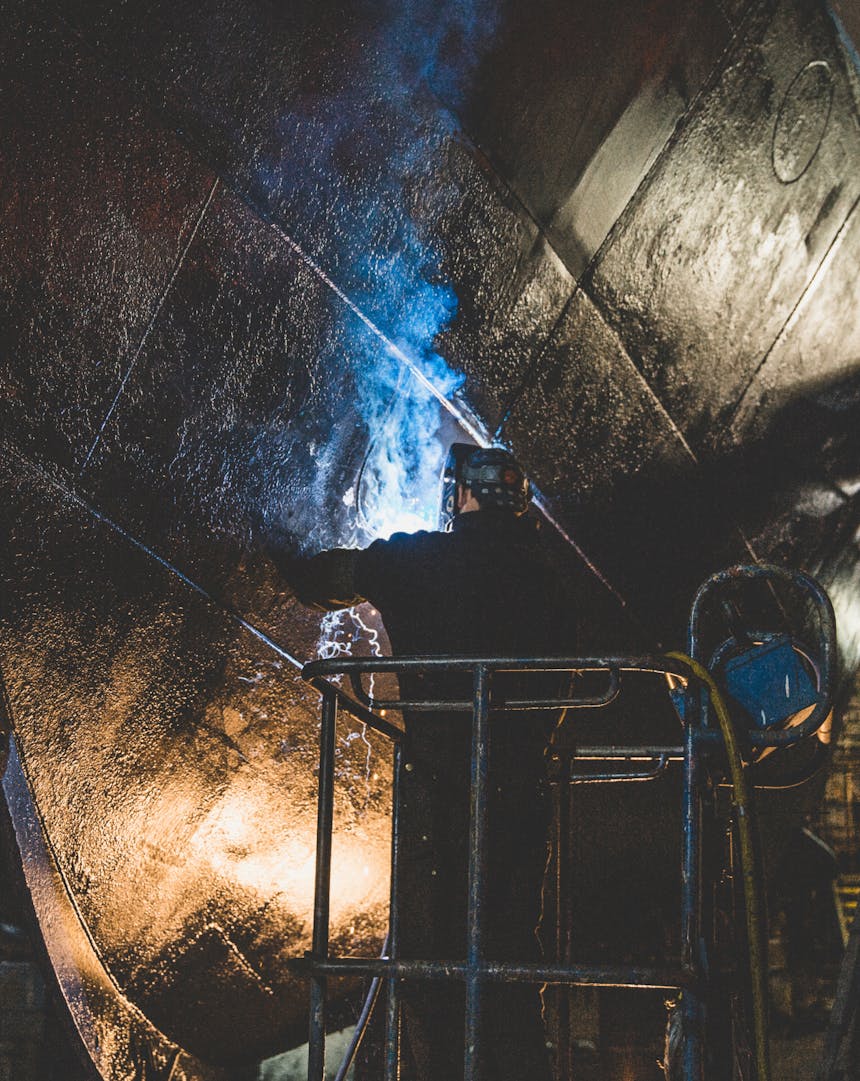
Thomas Lake retained ownership of the shipyard until well into the age of sternwheelers and steamboats, many of which were built in Puget Sound and plied the waters for the decades that followed in dual roles as passenger ferries and transport ships. This “mosquito fleet” included the T.W. Lake, a wooden-hulled sternwheel steamship that Lake built in 1896.
Lake sold his interest in the yard to Thomas Windsor, a local lumberman, in 1897. For a brief period, it was the site of a lumberyard, until 1902 when new owners used it once more for ship construction and servicing.
The new century witnessed growth for the former Lake shipyard in Ballard. While larger in size and including expanded facilities, the location and purpose of the newly reopened shipyard remained essentially the same. Its core operations were to build and service a wide variety of wooden-hulled boats for the cold waters of Puget Sound and all points beyond.
In October 1902, the site was bought by the Seattle Dry Docks Company and re-listed that same year as the Seattle Shipyard Company. At a cost of $60,000, the company employed two shifts of men working night and day to construct new marine ways. The new owners went so far in their construction plans to ask the city council for approval to use dynamite in the site’s excavation (it was granted). The shipyard was also expanded to include the old Heckman and Hansen sites adjacent to the property, which brought the new yard to just over four acres in total size.
The work to modernize the shipyard also included several new modifications: the installation of a new marine railway capable of hauling 4,000 tons; dredging of a channel up to the site, which increased the depth from 15 feet to 33 feet, allowing larger boats to anchor at the dock; and construction of a two-story building to house three high-pressure boilers and a pair of high duty engines for hauling out boats.
From its start, Pacific Fishermen was a company founded by and for fishermen. This is a business model and a guiding principal for the cooperative, which has continued successfully to this day.
Over the next two decades, the shipyard produced new ferries, new seine fishing boats, new cargo ships, and new tugboats. In 1912, new owners had also consolidated the Seattle Shipyard Company with its neighboring Ballard Shipyard Company, to form the Ballard Marine Railway (BMR) on the site of Lake’s old shipyard.
Less than a year later, in January 1913, it was announced that Ballard Marine Railway had secured the contract to construct a new ship for a passenger and freight service run between Nome, Alaska and Point Barrow, Alaska. The latter destination was the northernmost point on the North American continent with human settlement. Through Ira Rank, a naval architect, the United States Mercantile Company had prepared designs for the vessel. The company had received a federal contract to deliver mail between the northern ports, which necessitated the construction of a new vessel for the role.
When finished, the 65-foot Arctic was equipped with a six-foot drought, enabling it to maneuver in shallow coastal waters, cabin accommodations for up to 20 passengers, and a freight capacity of 30 tons. It was a lucrative windfall for the yard, with an estimated cost of $20,000 to complete. That same year saw another commission from a local fisherman, C. Johnson of Ballard, for a new 30-foot trolling boat.
The entry of the nation into World War I in 1917 heralded a new chapter in the BMR shipyard’s operations. As one of the major shipyards on the West Coast, Ballard had become an established hub for shipbuilding activity in the Pacific Northwest.
The first of these World War I-era vessels built under the Ballard Shipbuilding Company was the 110-foot sternwheeler T.C. Reed, launched on October 31, 1917. Captain H.B. Lovejoy presided over the launching ceremony and donated the last bottle of champagne from his cellar to mark the occasion. The ship was commissioned by the Puget Sound Baker River Logging Company of Mount Vernon, to replace an older sternwheeler of the same name.
More wooden vessels soon followed the Reed. In 1917, these included the 64-foot purse seiner D. McDonald; a cannery tender for the same owner destined for Cordova, Alaska, costing $8,000 to build; a 46-foot seine boat for Nick Vallas, powered by a 20 h.p. Imperial engine; and contracts for three scows—two for the San Juan Fishing & Packing Company, another for the Wards Cove Packing Company—and a $20,000 new canner tender. The construction of three new, ocean-going wooden steam schooners soon followed for the Northwest Shipping Company. It was a true validation of the Ballard Marine Shipyard’s advertisement of that year: “Built and repaired boats and barges a specialty.”
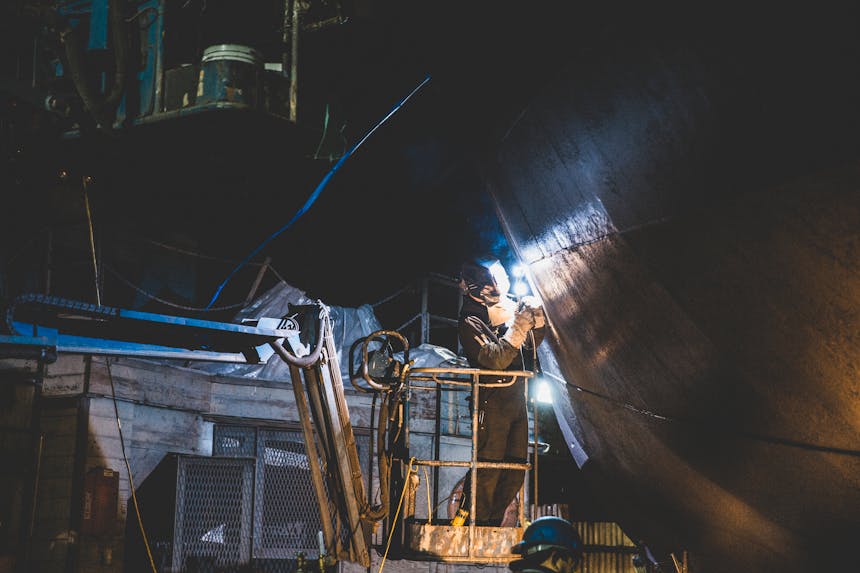
Following the end of World War I the Ballard Marine Railway continued its operations for both servicing commercial fishing vessels, as well as new contracts for ocean-going tugboats, minesweepers, and sub chasers for the US Navy and Merchant Marine fleets.
Between 1942 and 1945, a total of 16 minesweepers, subchasers, and patrol boats for the US Navy were built at the Ballard Marine Railway shipyard. Out of this total, four vessels were commissioned as British Motor Minesweepers, designated as “BYMS.” Two of the minesweepers originally built at the Ballard Marine Railways went on to have famous careers, following their period of service as military vessels. One of them—BYMS-26—became Jacques Cousteau’s research vessel, the r/v Calypso. Another ex-minesweeper was purchased by John Wayne and modified as the m/y Wild Goose.
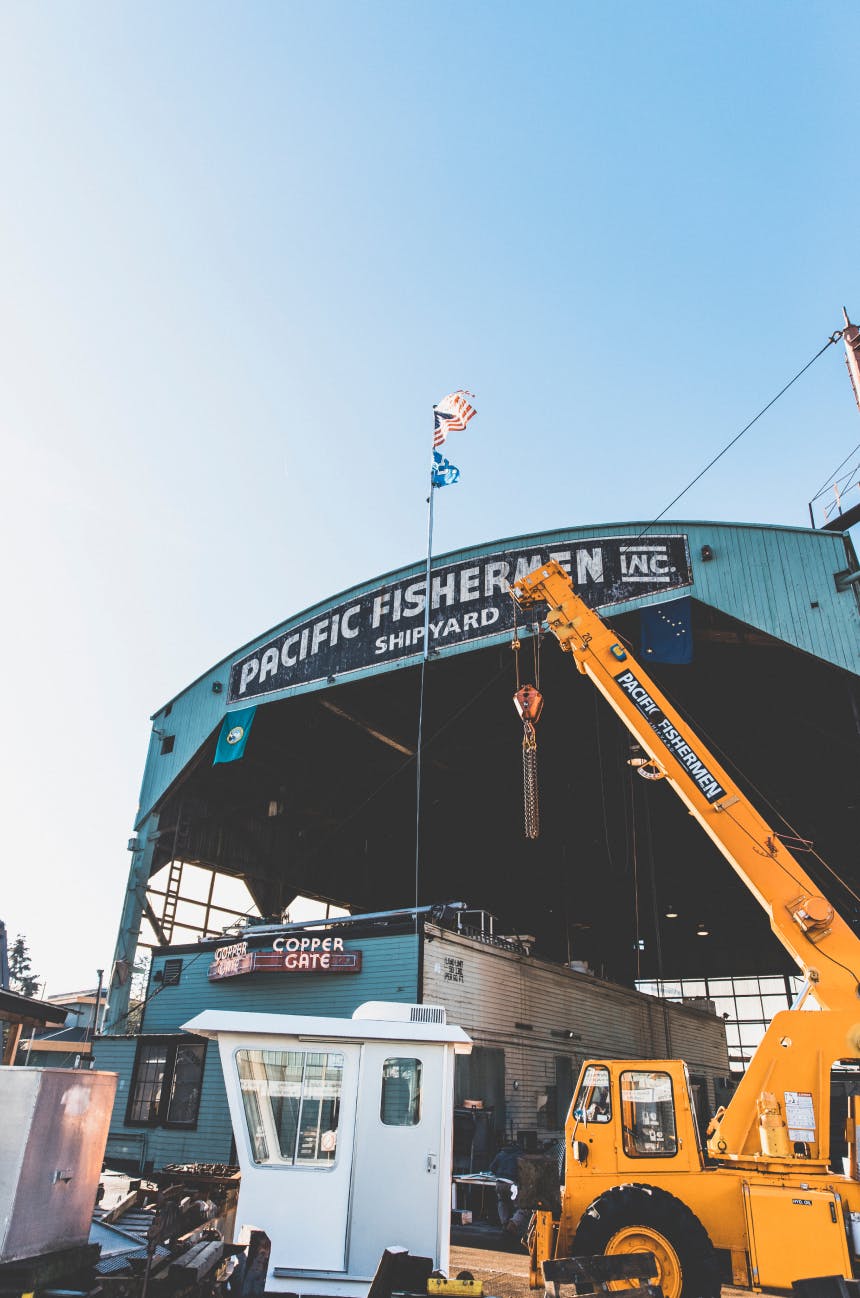
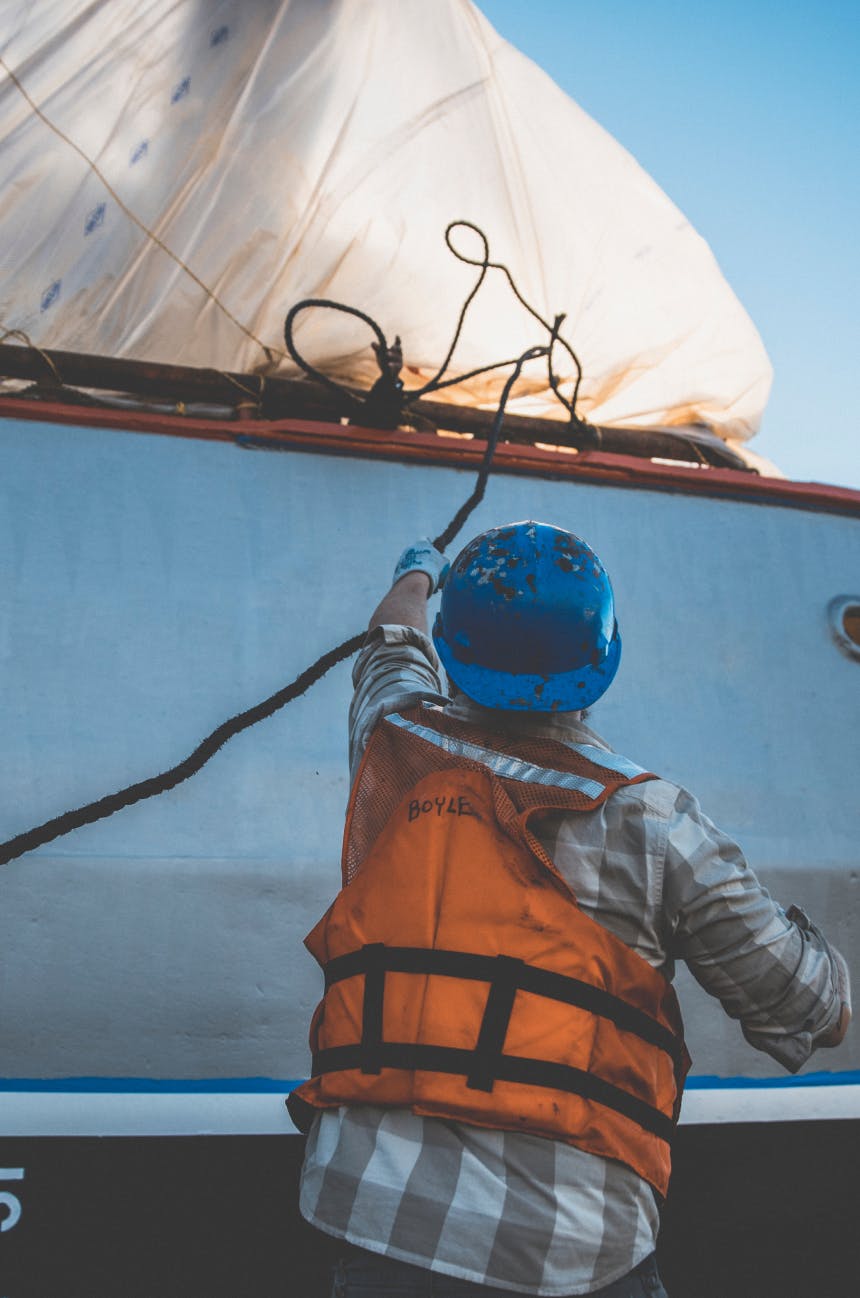
The peacetime era following the end of World War II in 1945 promised a new direction for the Ballard Marine Railways and its future as a shipyard. Not only would it continue to build and service fishing vessels for the local community, but it would soon be operated and managed by Norwegian immigrant fishermen and their families as well.
While wooden-hulled fishing boats had continued to be a mainstay of the shipyard since the time T.W. Lake had first started it as a one-man operation on the shoreline of Salmon Bay, the fishing industry presented a new opportunity for the yard to continue this legacy—but in an entirely new way.
These fishermen had established thriving businesses, worked on their fishing boats in port, fished the waters, raised families, attended local churches, smoked, danced, drank, and did business together. There was a sense of purpose among the group, and a community with shared cultural traits: a stoic nature that went unspoken and untrumpeted; an ingrained work ethic; and a belief that a man’s word was his bond. In meetings these men held in their homes, on the Ballard docks, in the bars, and at the local Leif Erikson Sons of Norway lodge, they gathered together and discussed the idea for a “co-op” business that would serve these fishermen’s interests where supplies, vessels, and markets for their catches were a concern.
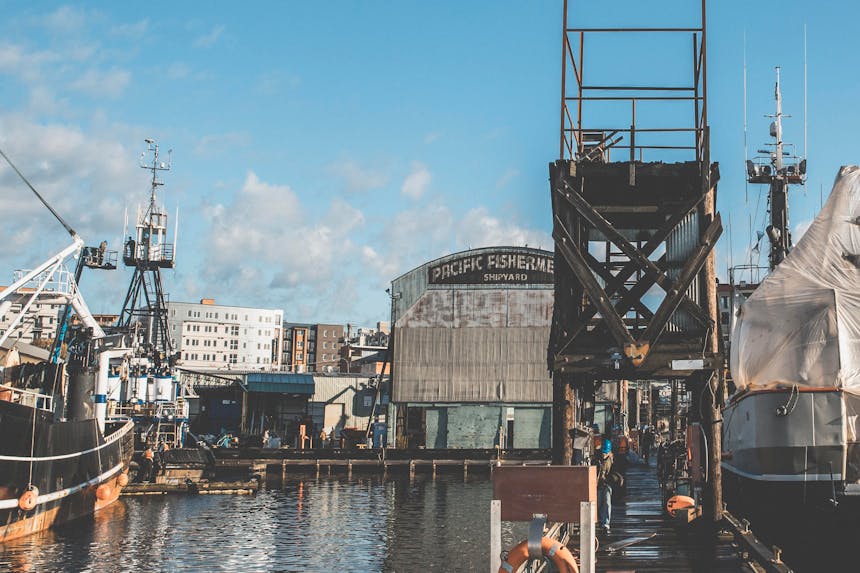
Out of this process, today’s Pacific Fishermen Shipyard was born.
On March 11, 1946, the articles of incorporation were filed in Olympia at the State Capital, officially creating “Pacific Fishermen Inc.” as the cooperative corporation in charge of the shipyard located at 5351 24th Avenue NW in Ballard. Noted in the public release about the new Pacific Fishermen yard were Gustav Paulsen, Sverre Johansen, and Bernard Hanson, with a capital investment of $300,000 to start.
These men, along with nine others also of Norwegian cultural heritage, formed the first board of directors for the shipyard, with Hansen serving as the president for the first three years. They represented between 300 to 400 fishermen with approximately 100 vessels. Each fisherman and their spouse was considered a stock shareholder by having purchased a single share of stock worth $300 “to own and participate in the ‘co-op’ to fix their boats.” The leadership with its Nordic roots remained unchanged in the decades that followed, with the officers all heavily involved in the fishing, maritime, and electrical industries.
From its start, Pacific Fishermen was a company founded by and for fishermen. This is a business model and a guiding principal for the cooperative, which has continued successfully to this day.
Look for more details about the history of the Pacific Fishermen Shipyard coming from the author in the forthcoming book, PacFish: The Story of A Seattle Shipyard over 150 Years.
